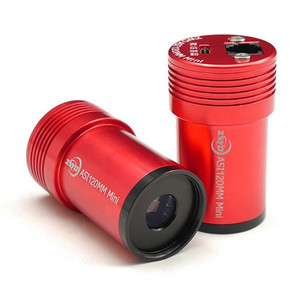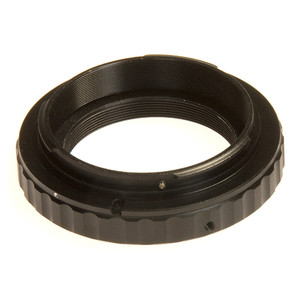Tyvärr har den här beskrivningen ännu inte översatts till svenska, så du hittar en engelsk artikelbeskrivning här.
Off-Axis Guider - Tracking the stars the easy way
An off-axis guider provides an easy way of guiding the telescope for taking your astronomy photos. You do not need to mount a large and heavy guide scope, as this is easier - especially if your telescope cannot withstand much additional loading.
The off-axis guider is extremely compact and relatively lightweight. It is therefore also well suited for your photography using smaller telescopes / mounts.
An off-axis guider works really simply
The off-axis guider is easily slotted into your 2" focuser and clamped in place. It has a T2 thread on the camera side - standard for the easy adaptation of your camera. To take photos with a DSLR camera, you only need a matching T-ring - and that's everything.
When the light passes through the off-axis guider, a small amount is deflected via a small lateral prism. An additional 1.25" opening now lets you use your reticule eyepiece or an auto guider. You can then get started immediately after you have found a suitable guide star in the field of view.
Long exposures - Pin-sharp astronomy photos
You have probably seen many beautiful astronomy photos - magnificent galaxies with imposing spiral arms, red-glowing hydrogen nebulae, globular clusters whose countless stars look like they are embedded in velvet. All those photos were taken using long exposures - photos you can take using an off-axis guider.
You can now control the tracking precisely and achieve deep sky images with perfect pin-sharp stars.
To make easier to find a guide star, the prism can be rotated around the optical path up to 120°. Only the guiding setup rotates, while the main camera holds its original position. Furthermore, the prism can be tilted to slightly improve the field of view.






